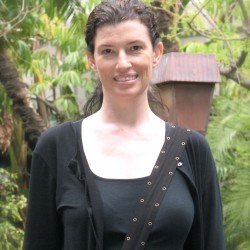Mary Morris FMNR Champion
January 5, 2016

“To me the value of every FMNR project is doubled by the fact that it does so much for such a small cost while staying embedded in the community to be useful forever.”
Mary Morris, FMNR Champion
Mary Morris has worked with World Vision since 2007. She began by working in the Humanitarian and Emergency Affairs department, investigating the continuing problem of how to best respond to slow onset disasters, most of which are closely connected to ecological health and climate change impacts.
In 2010 Mary joined the Natural Environment and Climate Issues team, linking her slow onset disaster history with her development work. Her work involves learning about the best practices that staff use in the field, and helping to ensure that other staff have the necessary knowledge and information to use those practices in their contexts.
With a background in ecology and public health, and a strong personal interest in environmental and financial stewardship, Mary was intrigued by Farmer Managed Natural Regeneration (FMNR).
“Finding a development practice that is remarkably inexpensive to implement, that can proliferate with little or no outside intervention, and that affects health, prosperity, and security, while sustaining critical well-being and livelihood resources was one of the most exciting discoveries ever for me,” she said.
“This kind of synergy gives people hope for a future in which their lands and their lives can grow progressively better each season rather than deteriorating and to me that is what development is about.”
Mary did not doubt most of the claims she had heard about the successes of FMNR, but admits she was sceptical that a tree could grow two metres in a year. However, when she tried FMNR herself on some shaggy tree stumps in her back yard, she found the claim was not an exaggeration.
“Two metres in a year is no problem at all for an FMNR tree,” she said.
“The thing that I love about a FMNR is that it takes knowledge and resources that are already easily available to the people and helps them to not only protect but to improve the resources that are the foundation of life and well-being for them and their children,” she said.
“They are building up their own environment, and they can easily teach other people to do it.
“Let’s face it, development organizations are never in a situation where there’s just too much money to go around – no one is these days.
“To me the value of every FMNR project is doubled by the fact that it does so much for such a small cost while staying embedded in the community to be useful forever.”
Mary says FMNR is the best use of limited funds that she can think of.
“Especially when you consider that in the new normal that is climate change, every single tree that can grow to adulthood helps all of us,” she said.
“So a process that makes it cheaper, easier and faster to grow healthy, hearty trees is to me one of the most important things that we can support.
“The communities in Humbo, in Talensi, and in all of these other projects are really contributing to all of our well-being and I think that is important too.
“These are not just people who need help, they are people who can provide important help to all of us.”
